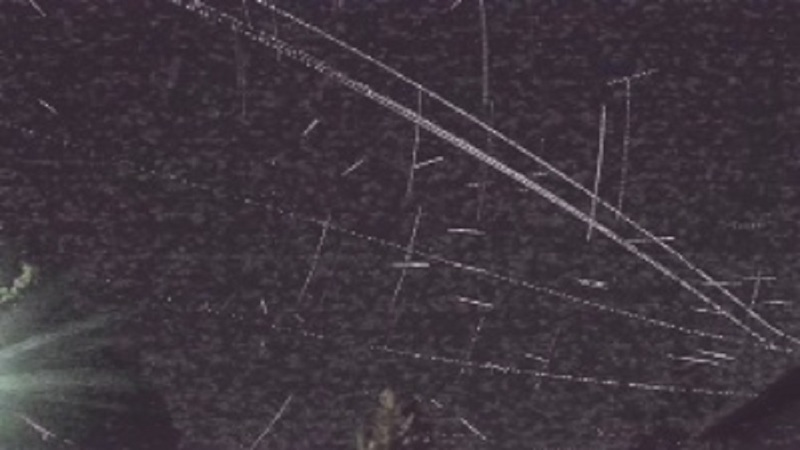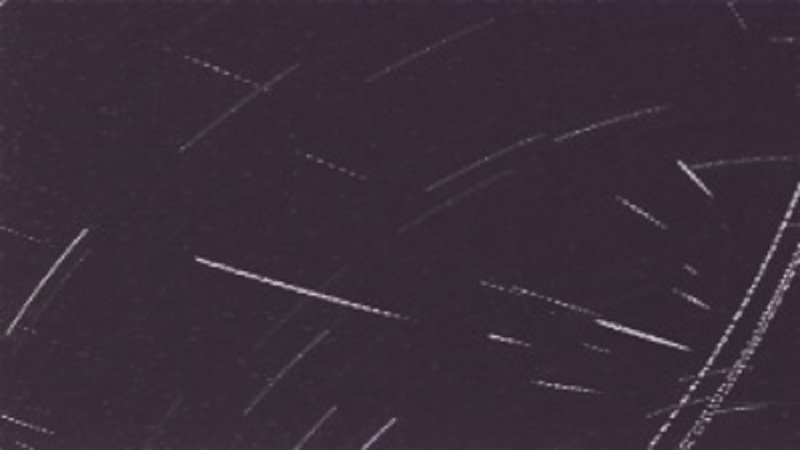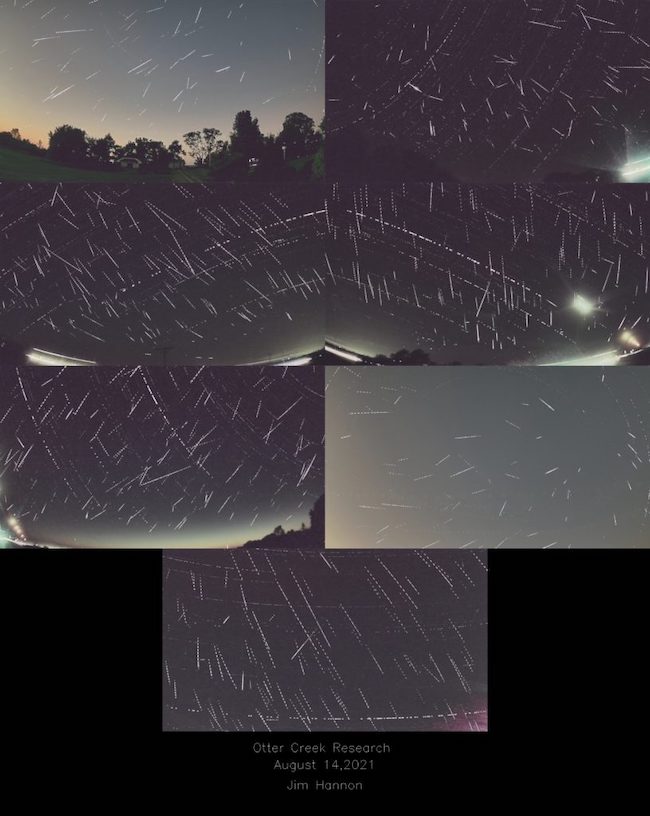
Robert Lunsford of the American Meteor Society (AMS) and the International Meteor Organization (IMO) originally published this story at the IMO’s website on August 15, 2021. Re-printed here with permission. Thanks, Robert!
Unexpected Perseid outburst
On the morning of August 14, 2021, the Perseid meteor shower displayed an unexpected outburst of meteors between 06:00 and 09:00 UTC (1 to 4 a.m. CDT). So far we have received visual confirmation of an impressive display of Perseids from observers in Wyoming, U.S., and Ontario, Canada. AllSky camera systems located in Iowa, U.S., have recorded between 900 and 1,100 meteors each during the course of the entire night. My AllSky system, located outside of San Diego, California, U.S., recorded just under 600 meteors with cloud interference and a lower radiant altitude. The cause of this outburst is currently unknown but is probably the result of an unknown filament of comet debris produced by comet 109P/Swift–Tuttle as it raced through the inner solar system many centuries ago. Rates are normally 50% lower each preceding night after maximum but these rates are two to three times more than was seen during the expected maximum on the night of August 12/13, 2021.
Central Bureau for Astronomical Telegrams #5016 (Jenniskens, 2021) states the peak was reached on August 14 at 08:02 UTC (solar longitude 141.474 ±0.005 degrees (equinox J2000.0)), with maximum zenithal hourly rate between 130 ±20 (calculated from CAMS Texas and California networks) and 210 ±20 (calculated by K. Miskotte (DMS) from Pierre Martin’s visual observations) in good agreement with values calculated by H. Ogawa of the International Project for Radio Meteor Observation from radio forward-scatter meteor observations.
According to Peter Jenniskens, this probable filament may have been crossed over the last years, especially in 2018 (ZHR ~ 25 at solar longitude 140.95 degrees) and 2019 (ZHR ~ 30 at solar longitude 141.02 degrees).


References
MeteorNews: Strong outburst Perseids on August 14, 2021 ~ 6 to 9 UTC
MeteorNews: Perseid meteor outburst 2021 by Peter Jenniskens
Central Bureau for Astronomical Telegrams: Perseid meteor shower outburst 2021 by Peter Jenniskens
Heather M. Wendelboe: Personal Communication
Michael Hankey: Personal Communication
Photos from all-sky cameras


Bottom line: An unexpected Perseid outburst took place on August 14, 2021. Some automatic all-sky cameras caught it, and observers in Wyoming, U.S., and Ontario, Canada, made visual observations.
Read more from EarthSky: Perseid meteor shower 2021 reaches its peak











